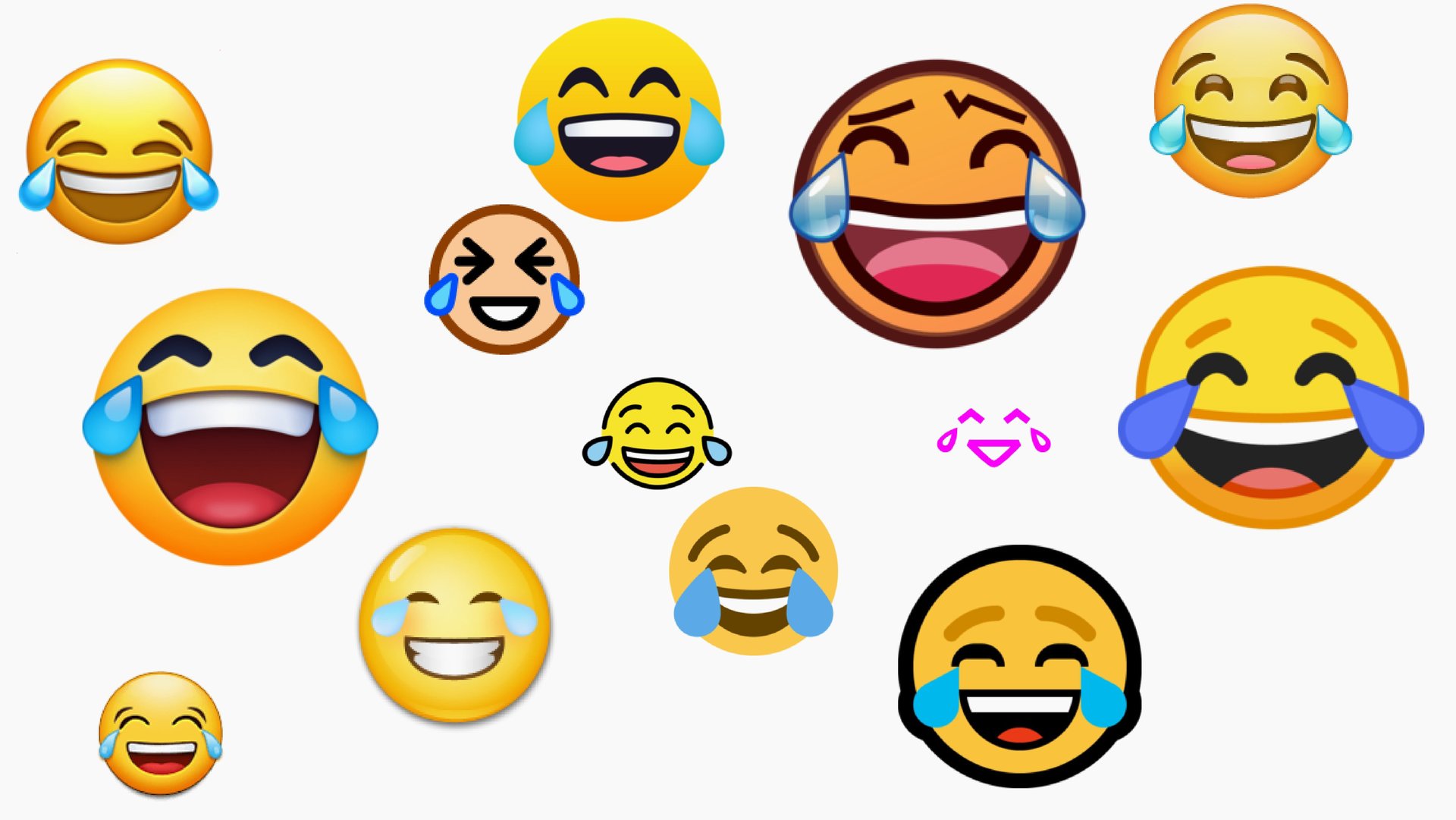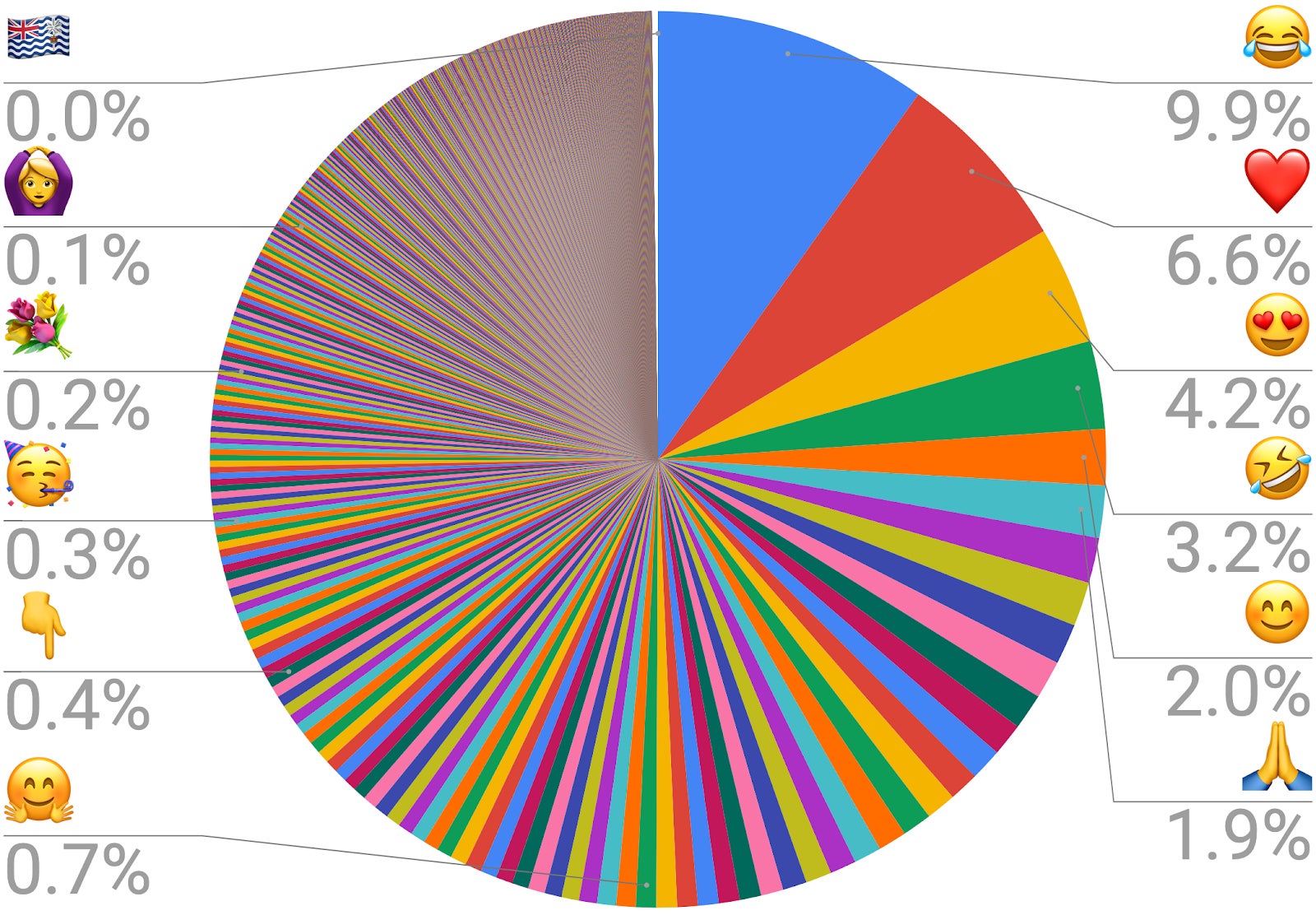Why we can’t stop using the “face with tears of joy” emoji
The Unicode Consortium reported last week that “face with tears of joy” (😂) is the most frequently used emoji, eclipsing the red heart (❤️) and “smiling face with heart-eyes” (😍) which came in second and third respectively. The Silicon Valley-based organization, comprised of representatives from big tech companies, universities, and government agencies, revealed for the first time that they’ve been monitoring our emoji habits. This is meant to inform the annual selection process for new emojis.


The Unicode Consortium reported last week that “face with tears of joy” (😂) is the most frequently used emoji, eclipsing the red heart (❤️) and “smiling face with heart-eyes” (😍) which came in second and third respectively. The Silicon Valley-based organization, comprised of representatives from big tech companies, universities, and government agencies, revealed for the first time that they’ve been monitoring our emoji habits. This is meant to inform the annual selection process for new emojis.
“Understanding how frequently emoji are used helps prioritize which categories to focus on,” says Mark Davis, president and co-founder of the Unicode Consortium. The ranking, he explains to Quartz, is based on anonymized usage data across multiple sources.

Unicode’s ranking echoes other surveys, which also ranked the “face with tears of joy” ahead of 2,822 other emoji. In 2015, Oxford Dictionaries chose it as “word” of the year. Introduced in 2010, the “face with tears of joy” pictograph is commonly used to underscore a joke, acknowledge a funny comment, or soften a sarcastic remark. To describe a pointless meeting for instance, we might text, “wow, that was a really productive meeting 😂” Along with the rolling-on-the-floor emoji (🤣) which came in fourth place in Unicode’s survey, it conveys extreme hilarity, much more than any of the other smiley face emoji available.

The exaggerated nature of “face with tears of joy” is the crux of its appeal, explains Monica Riordan, a cognitive psychologist who specializes in computer-mediated communication. “You are essentially trying to encode an incredibly complex set of emotional and social cues into a tiny little graphic and then hoping that the other person correctly interprets what you’re trying to convey,” she explains. Numerous studies suggest that 55% of human communication is through body language—gestures, posture, facial expression—and 38% is conveyed by a speaker’s tone and inflection. These cues vanish in text messaging, so we compensate by exaggerating our response. “We tend to use extreme emojis to kind of upgrade the response,” says Riordan. “People do not generally break down into tears when they laugh.”
Emoji as “basic relationship maintenance tools”
Riordan suggests that the tendency towards hyperbolic characters can also exaggerate the truth. “Because they [the receiver] can’t see our faces or hear our vocal tones, we can actually use emojis to express an emotion that we are not feeling,” she points out. In essence, digital messaging limits our ability to convey nuance or subtlety.
Emojis are, in large part, “relationship maintenance tools,” Riordan explains, and are used to express emotions that we know the other person wants us to express. She describes her automatic response to her husband’s dad jokes. “I go ahead and use the emoji to laugh even if I’m not actually laughing in real life.” Sometimes, 😂 is merely a default signal of affection.
Inevitably, not everyone is a fan of the tears of joy symbol. A Guardian reviewer for instance, was repulsed by its “broad, cackling grin and the performatively prominent tears of mirth that just feels inherently mocking and cruel.” But Riordan reminds us that emoji don’t have a fixed meaning. For example, the unicorn emoji (🦄) which is widely deployed as a queer avatar has also been used to signal a rare occurrence. Similarly, the peach emoji (🍑) which has been a stalwart sexting symbol, recently acquired political meaning in the US, to refer to the impeachment inquiry into president Donald Trump.